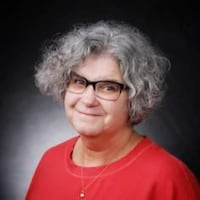Richardson, 20, is charged with aggravated murder, involuntary manslaughter, child endangering and abuse of a corpse. After the prosecution rested Monday afternoon, Judge Donald Oda II dismissed a tampering with evidence charge against her, ruling the prosecution had not proven its case on that charge.
Tuesday was the sixth day of her trial, which has gained national attention. The prosecution says Richardson murdered her baby after concealing her pregnancy. The defense contends that the baby was stillborn and Richardson, scared about how her family would react, buried her.
Scott Richardson, her father, was permitted to testify as a character witness only, and Oda explained to the jury they could not consider his testimony for the truth of the facts.
He was designated a “victim’s representative” of Richardson’s baby by the judge and permitted to stay in the courtroom for other testimony despite the separation of witness rule. His wife, Kim, remains under subpoena from the prosecution and is not permitted in the courtroom.
The family of the baby’s father has also been in the courtroom during the trial, sitting with a victim’s advocate behind the prosecution table.
Scott Richardson told the jury his daughter, who liked working with children, suffered from eating disorders from about the age of 12 or 13. The jury viewed multiple photographs of Richardson at various weights before and after her pregnancy.
Scott Richardson identified his daughter in pictures as a young girl and later as a teen with her arm around children in her family and while volunteering with special needs cheerleading teams.
The jury saw pictures of Richardson taken in a Columbus store in February 2017 as she chooses her prom dress. She is smiling in a sparkly red form-fitting dress. Another photo of her was shown from three months later, on the night of prom in the same dress, although her stomach is bigger. She was already having cramping from labor that night, officials have said.
Scott Richardson said he was “very” shocked when he learned in July 2017 that his daughter had been pregnant after the baby’s remains were found buried in the backyard. He said he heard nothing on the night of May 7, 2017, when Richardson told police she delivered the baby in the toilet of an upstairs bathroom.
During questioning of Scott Richardson, defense attorney Charles H. Rittgers pointed out that the family dogs, Peanut and Norman, slept in Richardson’s bed but did not bark on the night of the birth.
He said his son, Jackson, who shares a bathroom with Richardson, was not awakened the night of the birth, which supported the defense’s stance that the baby was stillborn.
When detectives told Scott Richardson they wanted to talk to his daughter twice in July 2017, he said he told her to tell the truth. He added the then-teen was very trusting of people in authority.
Scott Richardson said he regrets letting his daughter be interrogated a second time without an attorney, acknowledging he had no idea police could “lie” during questioning.
Scott Richardson said he and his wife would have supported Richardson if she had come to them about the pregnancy. His testimony ended when he choked up and said, “She would never hurt another living being … let alone a baby.”
The second defense witness was Dr. John E. White, of Mount Auburn OB-GYN, and the defense asked him questions about his medical review of Richardson’s case. He was asked if he had an opinion about whether Richardson gave birth to a stillborn baby.
Credit: DaytonDailyNews
He said his opinion is that “indeed, early in the morning on May 7, (2017), at home in her bathroom alone, she delivered a stillbirth infant” at about 3 a.m.
White said he based his opinion on Richardson’s statements to police, including her statement that the umbilical cord was not attached when the baby was born. That contradicted the prosecution’s expert witness, Dr. William “Kim” Brady, who testified last week that the testing of records and the remains were not sufficient to determine if the baby suffered from any medical problems that pointed to stillbirth.
The doctor looked at the two pictures of Richardson in the prom dress, first at a fitting and then, months later, two days before birth.
“She still fits in her dress … she doesn’t look like she has gained any weight,” White said.
He added he believed the baby was suffering from growth restriction in the womb, which can lead to a stillborn birth.
On cross-examination, Assistant Prosecutor Julie Kraft repeatedly asked White about how he came to form his opinion and referenced two reports he prepared. Kraft challenged the information White used to form his opinion, which included Richardson’s interrogations with police and measurements of the baby taken by other doctors.
The defense also called Alan Hirsch, a professor at Williams College who has studied interrogations and false confessions. The defense asked Hirsch to describe methods that commonly lead to false confessions, then asked him specifics about Richardson’s second interrogation with police, during which she made admissions the defense team said were forced by police pressure.
In particular, Hirsch mentioned that investigators led Richardson to believe she wouldn’t get in trouble if she made confessions about the baby’s death and burning.
“That is very problematic … it can break down an innocent person,” Hirsch said.
About the Author
